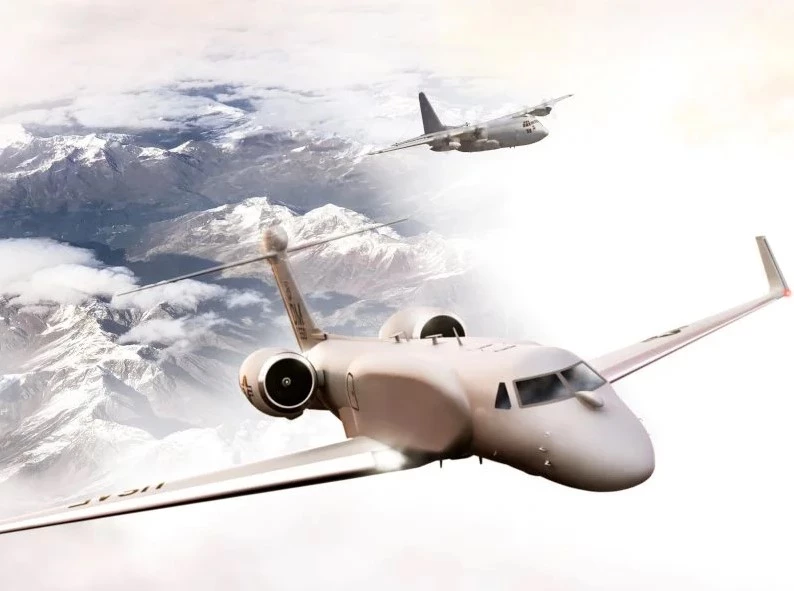The US Air Force has taken delivery of the first of 10 improved EC-37B Compass Call electronic attack warfare aircraft from BAE Systems and L3Harris Technologies as it replaces its vintage EC-130H Compass Call that has been in service since 1982.
With its emphasis on action and improbably fiery explosions, Hollywood has set in the public mind a view of war as a slam-bang affair where every engagement is a frontal attack in the teeth of withering gunfire. However, not every battle is a replay of D-Day or Rorke's Drift. Many fights are silent and invisible, relying not on rockets and bullets, but electromagnetism and binary bits.
Case in point is electromagnetic attack (EA), which involves seemingly defenseless aircraft that are armed to the teeth with antennas, electronics, and clever algorithms. Since the 1980s, the US Air Force has operated a fleet of 14 Hercules aircraft designated EC-130H Compass Call. Their primary job isn't air traffic control, reconnaissance, communications, or early warning, but to actively engage the enemy by jamming, spoofing, or otherwise disrupting command communications and other vital electronic systems to disable air defenses and command and control systems.

This fleet is now being phased out in favor of the EC-37B, which is based on the civilian Gulfstream G550 business jet. With its length of 95 ft (29 m) and wingspan of 91 ft (28 m), it is smaller and lighter than its predecessor, resulting in operating costs 50% that of the Hercules. It also has more speed, greater range, and a higher operating ceiling thanks to its two Rolls-Royce BR710 C4-11 engines.
Inside the Gulfstream airframe the electronics are a more advanced version of that carried in the EC-130H. The electronics were built by BAE Systems at its Hudson, New Hampshire facility and these were integrated by L3Harris at its Waco, Texas aircraft missionization center.
Expected to enter service in mid-2024 with the 55th Electronic Combat Group (ECG) located at Davis-Monthan Air Force Base in Tucson, Arizona, the first five will be equipped with the Compass Call Baseline 3 configuration and the second five will have the Compass Call Baseline 4 configuration. The latter will replace much of its hardware system with a new open architecture software for faster and simpler upgrades.
"Our team accomplished the incredible challenge of migrating the Compass Call mission equipment from the much larger EC-130H and fully integrating it into the Gulfstream G550 platform," said Jason Lambert, President, Intelligence, Surveillance and Reconnaissance, L3Harris. "As the Air Force sunsets its 40-year-old EC-130H fleet, the cutting-edge EC-37B will empower the customer to continue serving its vital electromagnetic warfare mission for generations to come."
Source: L3Harris






